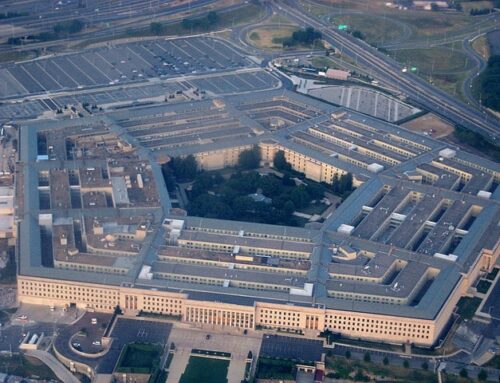In January, the Air Force notified Congress that its program for building a new generation of nuclear intercontinental ballistic missiles (ICBMs) was a stunning 37 percent over budget, based on budget projections made in 2020. The notification was required under a law called the Nunn-McCurdy Act, which requires the Pentagon to assess the root causes of critical cost overruns like this one, and to either cancel the program or certify that it is essential to national security, among other requirements.
Fewer than seven months later, the Pentagon just certified that the program meets the requirements to move forward, but here’s the catch: even after restructuring the program to cut costs, its projected cost per unit is now $214,000,000—81 percent more than the 2020 projection. The total acquisition cost for the program is now projected to surpass $140,900,000,000—that’s nearly $141 billion if you count the zeros.
The Pentagon’s certifications warrant intense scrutiny.
First and foremost, the Pentagon’s certification that the program is essential to national security is based on an antiquated Cold War doctrine that was not reevaluated under the Nunn-McCurdy review. That doctrine is the purported need for a nuclear triad of land, air, and sea-based nuclear weapons. But even weighing the program against the goals laid out in the most recent Nuclear Posture Review, the Sentinel and ICBMs in general are far from essential. In May, Taxpayers for Common Sense published a report called “Ripe for Rescission: A Cost-Benefit Analysis of U.S. ICBMs,” which made the case for cancelling the Sentinel program in light of its exorbitant cost and its failure to meaningfully contribute to U.S. nuclear weapons goals laid out by the administration. And that was before the most recent cost hike.
The Pentagon also certified that there are no alternatives to the program that will offer acceptable capability at a lower price. This is at best highly dubious. The Pentagon has still refused to declassify a 2014 Analysis of Alternatives that formed the basis of its decision to pursue a new generation of nuclear ICBMs rather than life-extending the current generation of Minuteman III missiles. Remarks from Air Force and Pentagon acquisition leaders also suggest that the result of the Nunn-McCurdy review was a forgone conclusion rather than a serious evaluation of the program and its alternatives. Air Force Lt. Gen. Richard Moore, the Deputy Chief of Staff for Plans and Programs, said early on in the review process that “Sentinel will be funded. We’ll make the trades that it takes to make that happen.” Similarly, Air Force Under Secretary Kristyn Jones asserted that “there won’t be a decision made that we can live without it.” These and other statements beg the question: how can we trust a certification that there were no acceptable alternatives to the Sentinel when the Pentagon was clearly determined from the outset to ensure that its review found no viable alternatives? Simply put, we can’t.
Perhaps the most glaringly problematic certification the Pentagon made pursuant to the Nunn-McCurdy requirements was that the program is a higher priority than programs that will face cuts to pay for its cost growth. During a press conference on the Sentinel’s latest cost explosion, Air Force Deputy Chief of Staff General Jim Slife responded to a question on which programs would face cuts, saying “our current profile does not suggest that any of the cost growth in the Sentinel program will be realized over the course of the next five years or so… and so really, it is a decision for down the road…” So, in essence, the Pentagon just certified to Congress that the Sentinel is a higher priority than programs that will face cuts to cover its cost growth without knowing which programs will actually face cuts. Presumably, officials relied on the technicality that until specific programs are identified for cuts, no specific programs will definitively face cuts, enabling them to certify that “the program is a higher priority than programs whose funding will be reduced to cover the increased cost of this program.” While there may be valid arguments for delaying decisions on which programs to cut until the cost growth necessitating the cuts kicks in, this certification effectively shields the Pentagon from any accountability over which programs will eventually face cuts to pay for the Sentinel’s cost growth, as the Pentagon can simply manufacture other justifications for cuts down the road.
If the past is prelude, the Air Force may seek a massive budget increase a few years from now to cover the Sentinel’s ballooning costs, rather than proposing cuts. And if it does propose cuts, you can bet they’ll be to programs with powerful constituencies behind them, a tried-and-true strategy for muscling Congress into supporting ever-larger military budgets.
Lest we think the cost growth is now over and done with, the office of Cost Assessment and Program Evaluation (CAPE) offered its cost projection for the restructured program with a 50 percent confidence level. The Pentagon laughably characterized this significant uncertainly as meaning that “it’s as likely for the final number to be lower as it is higher.” But if history is any guide, this confidence rating can be better understood as a very high likelihood that costs continue to grow. It’s budgetary corollary of Newton’s First Law of Motion—things in motion tend to stay in motion. Things with cost growth tend to stay in cost growth.
In fact, the Pentagon is already embracing new opportunities for cost growth. While the program will take 18-24 months to restructure, officials made clear that the program will move forward in the interim. That raises the question of whether work will continue under the current version of the program, or under some loose imagining of requirements for the restructured program. Either way, the Pentagon is increasing the risk of further cost growth and schedule delays, as both options could lead to unnecessary investments in parts of the program that may be thrown out or scaled back under the restructured program.
In the House-passed National Defense Authorization Act (NDAA), Rep. John Garamendi (D-CA), a leading voice in Congress for greater scrutiny over the Sentinel program, offered a successful amendment requiring a report on the Sentinel’s Nunn-McCurdy process to assess whether the Pentagon adhered to the Nunn-McCurdy requirements and thoroughly considered a range of alternatives. Congress can and should go farther by, at a minimum, pausing funding for the Sentinel while the program is restructured over the next 18-24 months. But as if not more importantly, Congress should challenge the strategic underpinning of the Sentinel program and ICBMs in general, and use its power over the budget to protect taxpayers from wasteful spending on nuclear weapons that don’t make us safer.











Get Social